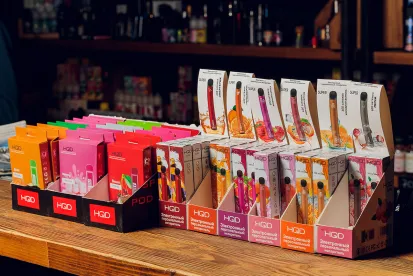As we previously reported, the Reagan-Udall Report evaluated FDA’s Center for Tobacco Products (CTP) and reported that stakeholders were concerned over, among other things, a lack of clear guidance and transparency regarding regulations, the premarket review process, and enforcement priorities. On February 24, 2023, CTP responded to the report and committed to addressing all 15 of the recommendations outlined therein as expeditiously as possible.
On April 25, 2023, a group of 23 academics and public health experts sent a letter to FDA Commissioner Robert Califf, MD, proposing recommendations for a more efficient, transparent, and fair tobacco and nicotine regulatory regime following the Reagan-Udall Foundation report[1].
The experts’ response, titled “Reagan-Udall Foundation evaluation of FDA’s tobacco program- a response” (hereinafter the “Letter”), recommends a four-part strategic framework for FDA to (re)shape its tobacco program considering President Biden’s “Cancer Moonshot” goal to cut the death rate from cancer by at least 50% over the next 25 years. The Letter details four pillars to support its recommendations: Education, Efficiency, Enforcement, and Engagement.
I. The Four Pillars
(1) To Degrade the Attractiveness and Addictiveness of Cigarettes and other Combustible Tobacco Products
The Letter notes that even though cigarette smoking causes 480,000 deaths per year and leaves 16 million living with smoking-related diseases, FDA’s regulation for these combustible tobacco products is light compared to the much safer non-combustible nicotine product alternatives. The Letter suggests that FDA should target regulatory controls on more harmful combustibles and make the regulatory process of non-combustible products more efficient. The Letter proposes FDA utilize its authority under sections 907[2] and 906[3] of the Tobacco Control Act to better regulate the ingredients, emissions, toxicants, packaging, and marketing of combustible cigarettes.
(2) To Promote Transition Pathways to Smoke-Free Status
The Letter suggests FDA should allow consumers to transition to a smoking cessation or smoke-free status with options to choose from a variety of alternatives to cigarettes. The Letter proposes FDA use its education and communication resources to address consumer misunderstanding.
(3) To Control Risks Arising from the Ongoing Use of Smoke-Free Nicotine Products
The Letter explains that once a smoker transitions to smoke-free nicotine products, there are still controllable risks for the user that will need to be monitored. Monitoring these risks should come in the form of regulating the product itself to reduce any electrical, thermal, or mechanical risks, for example, from e-cigarettes. Meanwhile, regulations targeting youth use should focus on marketing, branding, packaging, and point-of-sale restrictions rather than product design.
(4) To Protect Young People from Tobacco-Related Health and Welfare Risks
Lastly, the Letter acknowledges the risk of youth access to smoking, vaping, or nicotine in any form. The Letter states that strategies should address the reality that there will be a subset of youth who engage in transient experimentation. For some youth, vaping could be a diversion from smoking cigarettes. The Letter recommends FDA acknowledge that when prevention fails, it is preferable for youth to use a safer non-combustible nicotine product than cigarettes.
II. Balancing Risks
The Letter agrees with the Reagan-Udall assessment that FDA’s interpretation of the “Appropriate for the Protection of Public Health (APPH)” standard is unclear and inconsistent. It is unclear how the agency intends to balance the benefits of nicotine products for their harm reduction potential with the concerns about youth uptake of nicotine. The Letter proposes that FDA consider a variety of factors to help reconcile these trade-offs. The factors call for FDA to consider both the interests of adult smokers and adolescent vapers who would otherwise become smokers.
III. Supporting Measures
a. Education
The Letter discusses widespread misperceptions about the relative risks of smoking, vaping, and smokeless tobacco. These misperceptions may make smokers reluctant to switch from traditional cigarettes to e-cigarettes. The Letter also states that public health officials’ claims targeted towards youth, specifically around EVALI or gateway claims, adversely influence risk perceptions. The Letter recommends that CTP conduct mass communication and educational activity to rectify these misperceptions.
b. Efficiency
The Letter provides recommendations for simplifying the Premarket Tobacco Product Application (PMTA) process to reduce barriers to entry for novel and reduced-risk nicotine products and to reduce smoking. A few recommendations are highlighted below:
Develop and communicate clear and transparent strategies for APPH determinations
Create expedited pathways for evaluations for products that are similar and already established in the market to avoid repetition
Create ‘soft standards’ to expedite the technical evaluation process by allowing commonly accepted scientific findings; additional evidence would be required for products that did not meet the soft standards
c. Enforcement
The Letter stresses the need to have a balanced regulatory approach that is fair, transparent, and proportionate. The Letter recommends that FDA prioritize enforcement as follows:
Illicit supply chains and illegal supply networks;
Enforcing ID checks at point-of-sale; and
Removal of products that would be unlikely to be authorized, for which no pre-market authorization application has been made, or where an application for authorization has been made and rejected.
d. Engagement
The Letter recommends FDA use its authority to bring together experts, activists, and academics, to play the role of “honest broker” in assessing research findings on controversial subjects. The Letter also recommends that FDA make its research and assessments publicly available.
Kaitlyn Johnson also contributed to this article.
1 The Reagan-Udall Foundation is an independent 501(c)(3) created by Congress to advance the mission of FDA. FDA Commissioner Califf commissioned the Foundation to conduct a comprehensive evaluation of the Agency’s Center for Tobacco Products (CTP). Reagan-Udall published its final operational evaluation in December 2022.
2 See 21 U.S.C. § 387(g), Tobacco Product Standards https://bit.ly/3JZt3zS.
3 See 21 U.S.C. § 387(f), General Provisions Respecting Control of Tobacco Products https://bit.ly/3zmea5F.




 />i
/>i

